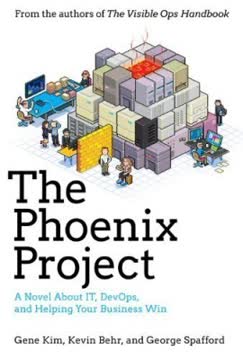Key Takeaways
1. Digital transformation requires building five essential organizational capabilities
To succeed digitally, companies must define data, business, and infrastructure components and design them for reuse.
Five building blocks. Digital transformation requires developing five key organizational capabilities:
- Shared customer insights
- Operational backbone
- Digital platform
- Accountability framework
- External developer platform
These building blocks are interdependent and mutually reinforcing. They enable companies to:
- Rapidly innovate and deliver digital offerings
- Achieve operational excellence and reliability
- Configure reusable components into new solutions
- Empower teams while maintaining alignment
- Expand value through ecosystem partnerships
Developing these capabilities involves reconfiguring people, processes, and technology. It's a long journey that requires sustained leadership commitment and organizational learning.
2. Shared customer insights drive innovation and value creation
Digital offerings are not just for start-ups.
Customer-centric experimentation. Shared customer insights emerge from constantly conducting experiments to test what digital offerings the company can develop and what customers value. This requires:
- Mechanisms to encourage idea generation and testing (e.g. innovation labs, hackathons, customer co-creation)
- An evidence-based culture of hypothesis-testing and rapid learning
- Processes to share insights across the organization
Companies should:
- Start with a high-level digital vision to guide experiments
- Tightly integrate product development, sales, and service processes
- Formalize knowledge sharing across the enterprise
This approach helps companies find the intersection between what they can do with digital technologies and what customers desire, leading to valuable digital offerings.
3. A robust operational backbone is the foundation for digital success
Digitized does not equal digital.
Operational excellence is table stakes. An operational backbone provides:
- Seamless end-to-end transaction processing
- Reliable, accessible master data
- Visibility into transactions and core processes
- Automation of repetitive processes
Benefits include:
- Increased profitability and customer satisfaction
- Greater agility and innovativeness
- Foundation for digital offerings
Building an operational backbone is challenging for established companies due to legacy systems and processes. Approaches to accelerate development:
- Reduce business complexity
- Narrow the scope of digitization efforts
- Lower standards initially to make faster progress
A robust operational backbone enables companies to focus on innovation rather than fixing operational issues.
4. Digital platforms enable rapid innovation and scalability
Componentization of digital offerings is what's so different about digital.
Reusable digital components. A digital platform is a repository of reusable business, data, and infrastructure components used to rapidly configure digital offerings. Key elements:
- API-enabled components for "plug and play" functionality
- Repositories for data, infrastructure, and business components
- Cloud-based foundation
Benefits:
- Accelerates development of new offerings
- Enables experimentation and continuous improvement
- Supports scalability
Developing a digital platform requires:
- Thinking in terms of components rather than monolithic systems
- Distinguishing stable elements from those that change frequently
- Balancing building components internally vs. acquiring externally
A well-designed digital platform positions companies for rapid innovation and digital growth.
5. Accountability frameworks balance autonomy and alignment
To build and use a digital platform, some people in your company will have to fundamentally change the way they work.
Empowered teams, aligned goals. An accountability framework distributes responsibilities for digital offerings and components to balance autonomy and alignment. Key principles:
- Component owners, not project managers
- Mission, not structure
- Metrics, not directives
- Experiments, not major launches
- Continuous release, not scheduled releases
- Fully resourced teams, not matrixed functions
- Collaboration, not hierarchy
- Trust, not control
Implementation approaches:
- Start small and allow for organizational learning
- Invest in coaching to develop new management skills
- Rethink governance to focus on defining missions rather than allocating resources
An effective accountability framework enables companies to innovate rapidly while maintaining strategic alignment.
6. External developer platforms expand ecosystem value
Unless you can provide the best solutions to your customers' every need in a timely manner all by yourself, you will have to tap into the creativity of outside parties as you generate digital offerings.
Ecosystem partnerships. An external developer platform (ExDP) is a repository of digital components open to external partners. It enables:
- Partners to use the company's components in their offerings
- Creation of an industry platform/marketplace for digital offerings
Benefits:
- Expands portfolio of customer offerings
- Generates new revenue streams
- Increases customer satisfaction
Developing an ExDP requires:
- Identifying strategically valuable components to expose
- Establishing governance for component access and use
- Managing partner relationships effectively
While not all companies need an ExDP immediately, it can become a critical building block for long-term digital success.
7. Successful digital transformation follows a strategic roadmap
There is no single path or target business design defining how to become a successful digital business.
Sequenced capability building. Companies should develop a roadmap to guide their digital transformation, focusing on:
- Fixing critical operational backbone issues early
- Developing the digital platform in parallel with customer insights
- Establishing new accountabilities as digital offerings emerge
- Waiting to build an external developer platform until other capabilities mature
Key recommendations:
- Sequence early development based on most pressing needs
- Develop habits for continuous learning and improvement
- Avoid trying to do everything at once
- Be prepared to adjust course as you learn
A well-designed roadmap helps companies make steady progress without overwhelming organizational change.
8. Designing for digital inspires new value propositions
Companies need to arrange all the pieces of the puzzle so their people will be able to learn how to effectively apply the capabilities of digital technologies to new value propositions.
Inspiration through design. Successful digital companies:
- Are inspired by the capabilities of digital technologies (ubiquitous data, unlimited connectivity, massive automation)
- Redesign their organization to deliver on that inspiration
This involves:
- Imagining new possibilities for customers
- Reconfiguring people, processes, and technology to enable those possibilities
- Creating a learning environment that generates ongoing inspiration
By focusing on both inspiration and design, companies can continuously evolve their value propositions to succeed in the digital economy.
Last updated:
FAQ
What's "Designed for Digital: How to Architect Your Business for Sustained Success" about?
- Digital Transformation Focus: The book explores how companies can redesign their business architecture to thrive in the digital economy by leveraging digital technologies.
- Five Building Blocks: It introduces five essential building blocks for digital transformation: shared customer insights, an operational backbone, a digital platform, an accountability framework, and an external developer platform.
- Organizational Design: The authors emphasize the need for a holistic organizational configuration of people, processes, and technology to deliver new value propositions.
- Case Studies and Examples: The book provides real-world examples and case studies from companies like Amazon, Schneider Electric, and Royal Philips to illustrate successful digital transformations.
Why should I read "Designed for Digital"?
- Strategic Insights: It offers strategic insights into how established companies can transition to digital businesses.
- Practical Frameworks: The book provides practical frameworks and methodologies for implementing digital transformation.
- Real-World Examples: Readers gain access to detailed case studies and examples of companies that have successfully navigated digital transformations.
- Future-Proofing Businesses: It helps business leaders understand how to future-proof their organizations in a rapidly changing digital landscape.
What are the key takeaways of "Designed for Digital"?
- Digital Business Design: Companies must design their business architecture to support digital offerings and customer value propositions.
- Building Blocks: The five building blocks are essential for a successful digital transformation and must be developed strategically.
- Continuous Learning: Digital transformation is a continuous journey that requires constant learning and adaptation.
- Empowerment and Alignment: Balancing autonomy and alignment through an accountability framework is crucial for fostering innovation.
What are the best quotes from "Designed for Digital" and what do they mean?
- "Digital technologies are game changing." This highlights the transformative potential of digital technologies in redefining business models and customer interactions.
- "Operational excellence is table stakes." It emphasizes that operational efficiency is a prerequisite for digital success, not a competitive advantage.
- "Designing big, old companies for digital success involves devolving accountabilities and embracing reuse." This quote underscores the need for organizational change and the importance of reusing digital components.
- "Digital business design is a senior executive responsibility." It stresses that digital transformation requires leadership commitment and strategic oversight.
How does "Designed for Digital" define digital business design?
- Holistic Configuration: Digital business design is the holistic organizational configuration of people, processes, and technology to deliver digital offerings.
- Strategic Execution: It ensures that a company can execute its business strategy in a digital economy by aligning its design elements.
- Beyond IT Architecture: Unlike traditional IT architecture, digital business design involves broader management engagement and strategic alignment.
- Continuous Evolution: It is not an end state but a continuous process of adaptation and learning.
What are the five building blocks for digital transformation in "Designed for Digital"?
- Shared Customer Insights: Learning what customers will pay for and how digital technologies can meet those demands.
- Operational Backbone: A coherent set of systems, data, and processes that ensure reliable and efficient operations.
- Digital Platform: A repository of reusable business, data, and infrastructure components for rapid innovation.
- Accountability Framework: Distribution of responsibilities that balances autonomy and alignment in digital initiatives.
- External Developer Platform: A platform that opens digital components to external partners to foster ecosystem partnerships.
How does "Designed for Digital" suggest companies should approach digital transformation?
- Assess Current Capabilities: Evaluate existing building blocks and identify areas for improvement.
- Develop a Roadmap: Create a strategic plan that sequences the development of building blocks based on company needs.
- Focus on Learning: Emphasize continuous learning and adaptation throughout the transformation journey.
- Empower Teams: Establish an accountability framework that empowers teams while ensuring alignment with company goals.
What role does the operational backbone play in digital transformation according to "Designed for Digital"?
- Foundation for Efficiency: It provides a stable foundation for efficient and reliable core operations.
- Data Integrity: Ensures accurate and accessible transaction and master data for decision-making.
- Process Standardization: Supports seamless end-to-end transaction processing and process automation.
- Prerequisite for Digital Success: Operational excellence is necessary for supporting digital innovation and offerings.
How does "Designed for Digital" address the challenge of balancing autonomy and alignment?
- Empowered Teams: Encourages the creation of autonomous teams with clear missions and metrics.
- Collaboration Tools: Provides collaboration tools and processes to facilitate coordination across teams.
- Trust Over Control: Emphasizes trust and coaching over hierarchical control to foster innovation.
- Continuous Release: Supports continuous release of software to enable rapid feedback and learning.
What is the significance of the digital platform in "Designed for Digital"?
- Component Repositories: It houses repositories of API-enabled business, data, and infrastructure components.
- Rapid Innovation: Facilitates rapid configuration and commercialization of digital offerings.
- Modular Architecture: Supports a modular architecture that allows for flexibility and scalability.
- Integration with Operational Backbone: Works in conjunction with the operational backbone to support digital initiatives.
How does "Designed for Digital" suggest companies should engage with external partners?
- External Developer Platform: Develop an ExDP to open digital components to external partners.
- Ecosystem Partnerships: Foster ecosystem partnerships to expand offerings and generate new revenue streams.
- API Management: Provide secure access to APIs and tools for external developers to leverage company components.
- Strategic Alignment: Ensure that external partnerships align with the company's digital strategy and goals.
What are the challenges of digital transformation highlighted in "Designed for Digital"?
- Cultural Change: Overcoming entrenched habits and cultural resistance to new ways of working.
- Complexity Management: Managing business complexity and aligning digital initiatives with strategic goals.
- Resource Allocation: Balancing resource allocation across building blocks to ensure meaningful progress.
- Leadership Commitment: Ensuring senior leadership commitment and strategic oversight throughout the transformation journey.
Review Summary
Designed for Digital receives mostly positive reviews, with readers praising its practical insights on digital transformation for medium to large organizations. Many find it well-structured, evidence-based, and filled with useful case studies. Reviewers appreciate the book's focus on building blocks for digital design and its comprehensive approach to organizational change. Some criticize it for being dense or potentially outdated in certain areas. Overall, readers value its contribution to understanding digital business strategies and implementation.
Similar Books










Download PDF
Download EPUB
.epub digital book format is ideal for reading ebooks on phones, tablets, and e-readers.




